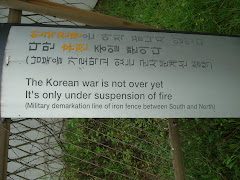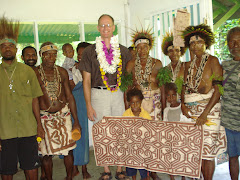
Our desire to meet people notwithstanding, a large part of our itinerary involved looking at buildings: palaces, mosques, bridges, avenues. As much as I like these things I wondered: is this what we’re here for? To admire buildings while on a peace mission seemed a diversion.
But I soon was converted. The buildings were all about an ancient Persian/Islamic culture that is alive and well. I was reminded of John Keats: '"Beauty is truth, truth beauty," - that is all/Ye know on earth, and all ye need to know.' Islam has flowered in the most exquisite and delicate art; a people who could produce these things command respect.
I was intrigued to learn how they used the buildings, especially the mosques. Our guide obliged me and showed us the niche where the prayer leader stands, demonstrated the amazing acoustics which enabled people to hear without microphones (six hundred years ago). We marveled at the intricate designs of scriptural texts and the built-in time-keeping device that insured they always prayed at noon.
The buildings showed a longing for God, for transcendence. They are an outward sign of a powerful spirituality that emphasized (over and over): peace, hospitality, compassion, gratitude. The buildings, especially the mosques, reminded me of the Christian Churches I visited in Europe, which emphasized the same things.
Experiencing the people and the culture of Iran actually spoke louder to me than the fulminations of President Bush or President Ahmadinejad: the presidents say many things appealing to specific constituencies in their countries. It is a game! And we heard from people critical of the Iranian President, and we were free in our critique of ours. Yet polemics don’t heal. They are not creative vehicles for understanding. Moving us beyond polemics and political frustration, the beautiful buildings dedicated to God inspired poetic thoughts and nurtured audacious hopes for a new way of being human in our world.

The last night we were in Iran we were in Shiraz and we visited the tomb of the poet Hafez. He lived in the 13th Century (I think) and wrote deeply moving poetry. His tomb is an exquisite piece of architecture, yet the place is deeply holy because it is where young people come in the evenings to read poetry—to themselves and to each other. Couples meet and walk in the gardens. Some look flustered and walk silently; others were exhilarated by the chance to be with girls or boys, chattering with animation. Most people we met of every age could cite a favorite passage of poetry. Here was the real soul of Iran: the buildings hint at it, but in the voices of the young adults, I felt I heard it.
In the words of Hafez:
“When fair ones talk in Persian, the streams of life outwell:
this news to pious Pirs, my Saki, haste to tell”






No comments:
Post a Comment